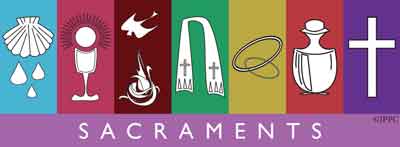
- This event has passed.
Event Navigation
Maundy Thursday, also known as Holy Thursday, is the commemoration of the Last Supper of Jesus Christ, when he established the sacrament of Holy Communion prior to his arrest and crucifixion. It also commemorates His institution of the priesthood. The holy day falls on the Thursday before Easter and is part of Holy Week. Jesus celebrated the dinner as a Passover feast. Christ would fulfil His role as the Christian victim of the Passover for all to be saved by His final sacrifice.
The Last Supper was the final meal Jesus shared with his Disciples in Jerusalem. During the meal, Jesus predicts his betrayal.
The central observance of Holy Thursday is the ritual re-enactment of the Last Supper at Mass. This event is celebrated at every Mass, as party of the Liturgy of the Eucharist, but it is especially commemorated on Holy Thursday.
He also establishes the special priesthood for his disciples, which is distinct from the “priesthood of all believers.” Christ washed the feet of his Disciples, who would become the first priests.
This establishment of the priesthood re-enacted at Mass with the priest washing the feet of several parishioners.
During the Passover meal, Jesus breaks bread and gives it to his Disciples, uttering the words, “This is my body, which is given for you.” Subsequently, he passes a cup filled with wine. He then says, “This is my blood…” It is believed those who eat of Christ’s flesh and blood shall have eternal life.
During the Mass, Catholics rightly believe, as an article of faith, that the unleavened bread and wine are transformed into the body and blood of Jesus Christ through a process known as transubstantiation. There have been notable Eucharistic miracles attributed to this event, such as bleeding hosts (communion wafers).
The Last Supper is celebrated daily in the Catholic Church as part of every Mass for it is through Christ’s sacrifice that we have been saved.
On the night of Holy Thursday, Eucharistic Adoration of the Blessed Sacrament takes place where the faithful remain in the presence of the Eucharist just as the Disciples kept a vigil with Christ.
Following the Last Supper, the disciples went with Jesus to the Mount of Olives, where he would be betrayed by Judas.
On Holy Thursday there is a special Mass in Cathedral Churches, attended by as many priests of the diocese as can attend, because it is a solemn observance of Christ’s institution of the priesthood. At this ‘Chrism Mass’ the bishop blesses the Oil of Chrism used for Baptism and Confirmation. The bishop may wash the feet of twelve of the priests, to symbolise Christ’s washing the feet of his Apostles, the first priests.
The Holy Thursday liturgy, celebrated in the evening because Passover began at sundown, also shows both the worth God ascribes to the humility of service, and the need for cleansing with water (a symbol of baptism) in the Mandatum, or washing in Jesus’ washing the feet of His disciples, and in the priest’s stripping and washing of the altar. Cleansing, in fact, gave this day of Holy Week the name Maundy Thursday.
The action of the Church on this night also witnesses to the Church’s esteem for Christ’s Body present in the consecrated Host in the Adoration of the Blessed Sacrament, carried in solemn procession to the Altar of Repose, where it will remain ‘entombed’ until the communion service on Good Friday. No Mass will be celebrated again in the Church until the Easter Vigil proclaims the Resurrection.
And finally, there is the Adoration of the Blessed Sacrament by the people during the night, just as the disciples stayed with the Lord during His agony on the Mount of Olives before the betrayal by Judas.

